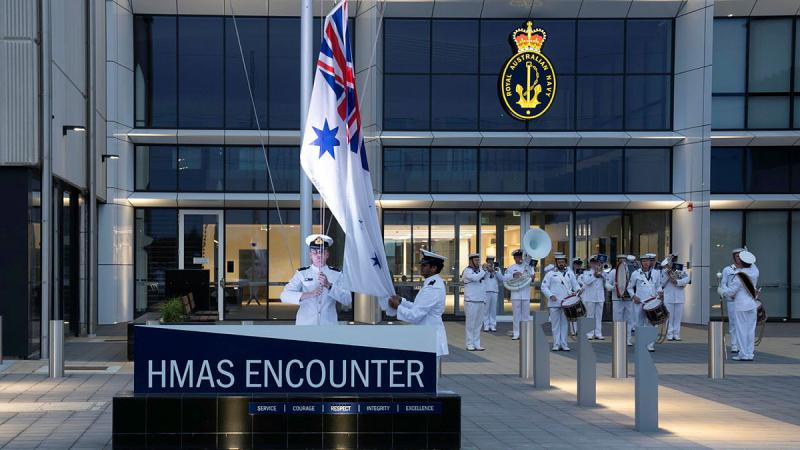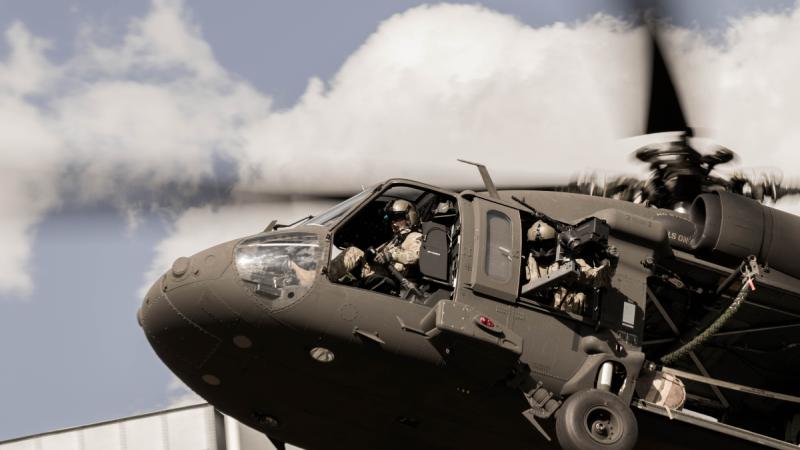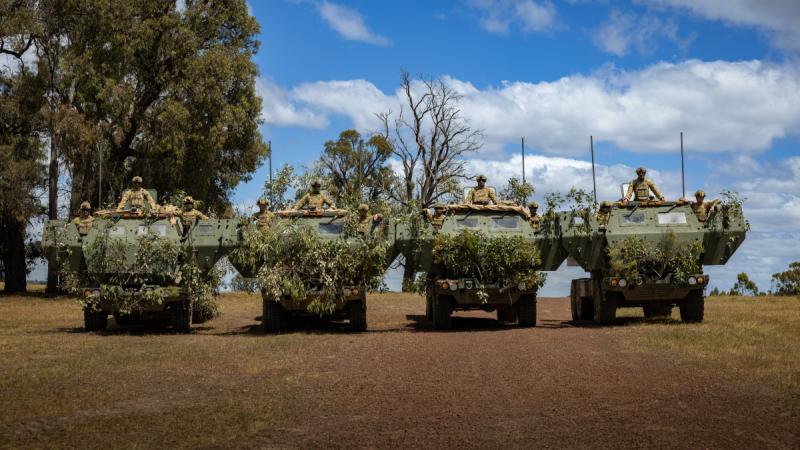30 September 2025
A pair of rockets launch from an M1150 assault breacher vehicle over an anti-tank minefield trailing 110m lines, each covered with 750 kilograms of explosives.
A thunderous explosion erupts as the lines detonate, triggering the mines or ejecting them from the site.
Inside the vehicle are a pair of sappers, like Corporal Connor Trost, a combat engineer vehicle section commander from 3rd Combat Engineer Regiment.
“It’s definitely a lot louder than you think, but from inside you can’t really tell. You’re just pressing the buttons,” he said.
The vehicle then moves into the charred lane, using its plough to bring up dirt and push it to the side as an extra means of mine clearance.
The plough can be set to a depth between 50-350mm, but operators need to factor in what mines the enemy has planted and how deep they might be.
Corporal Trost said his sappers had also been testing what plough depths worked best for different types of ground.
“If you go too deep, by the time the plough sets into the ground, there’s too much weight on the front, so it just stops the tank from going forward,” he said.
“You just have to raise and find the right depth.”
Apart from detonating and ploughing minefields, the assault breacher can be fitted with a dozer blade for pushing away obstacles such as tetrahedrons or for reducing anti-tank ditches.
It can also be fitted with a surface-clearing roller or excavator arm.
'It picks up speed really well. It’s nice to drive. Even though it weighs 70 tonnes you barely feel that’s slowing you down at all.'
Corporal Trost started his career as a regular sapper in 2019 before becoming a section commander three years later.
But for the past 16 months, he and a cohort of sappers have been training on the new vehicles. This included M113AS4 driver and crew commander courses before heading to the United States for initial combat engineer vehicle training. They then went to Puckapunyal for training on the new Australian vehicles.
“It picks up speed really well. It’s nice to drive. Even though it weighs 70 tonnes you barely feel that’s slowing you down at all,” Corporal Trost said.
Apart from the breacher, sappers also qualified on the M1110 joint assault bridge – essentially a scissor bridge placed on top of an Abrams tank chassis.
The crew commander or driver controls bridge placement using a gaming-style controller and camera feeds.
Once down, the vehicle ejects the bridge and moves to the side.
Corporal Trost said the time to have it down averaged between two and three minutes depending on operator experience and each vehicle’s hydraulics.
“The only challenge so far is getting the vehicle in the right spot to deploy the bridge,” he said.
“They may need to test and adjust, but over time they have gotten better. Eventually I think placement time will get shorter.”
The current engineer vehicle section format is two breachers and one bridge, and Corporal Trost said tank crews were keen to incorporate the armoured engineers.
“In the past few years there was a bit of pretending we had them, with a lot of notional stuff. But now the platform is here, things are a lot better,” he said.
“I didn’t think as an engineer that I’d be qualified on a tank platform. It’s pretty cool to be involved with, especially the first batch of people to be qualified.”


